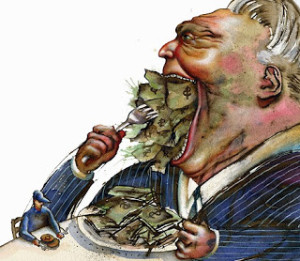~ Editor’s NOTE ~
 For the past 16 years, we have tried desperately to keep “politics” out of and off of Dr. Kelley’s website – however it appears that over the years and the decades – politics has injected itself into every aspect of our lives – most specifically into the world of OUR health and well-being. What follows is another example – in this case – short-changing the American grower (of healthy food) in order to keep others into our pockets. What is the reliability of the food we are importing? How healthy is it? How much has Monsanto stuck their filthy hands all over? Read on… ~ J.B.
For the past 16 years, we have tried desperately to keep “politics” out of and off of Dr. Kelley’s website – however it appears that over the years and the decades – politics has injected itself into every aspect of our lives – most specifically into the world of OUR health and well-being. What follows is another example – in this case – short-changing the American grower (of healthy food) in order to keep others into our pockets. What is the reliability of the food we are importing? How healthy is it? How much has Monsanto stuck their filthy hands all over? Read on… ~ J.B.
Uncle Sam is forcing American farmers to dump thousands of pounds of the nation’s tart cherry crop on the ground this year, and one particular farmer wants everyone to know about it…
 The Michigan farmer, Marc Santucci, posted a picture (left) to Facebook July 26 showing thousands of cherries on the ground, hours from rotting, because of an order from a board that is overseen by the US Department of Agriculture. He said he was forced to dump 14 percent of his crop, and other farmers as much as 30 percent.
The Michigan farmer, Marc Santucci, posted a picture (left) to Facebook July 26 showing thousands of cherries on the ground, hours from rotting, because of an order from a board that is overseen by the US Department of Agriculture. He said he was forced to dump 14 percent of his crop, and other farmers as much as 30 percent.
The picture quickly went viral and has garnered 63,000 shares, 12,000 likes and 8,000 comments.
The dumped cherries cannot be sold.
“These cherries are beautiful,” Santucci wrote on his Facebook page. “But, we have to dump 14 percent of our tart cherry crop on the ground to rot. Why? So we can allow the import of 200 million pounds of cherries from overseas! It just doesn’t seem right.”
At issue is something called the Cherry Industry Administrative Board (CIAB), which determines the percentage of cherry crops that can be placed in the market. The board’s order has the force of law, and farmers are prohibited from selling more than the percentage that is set.
“I have people who would buy them if I could sell them,” Santucci wrote.
The cherries that are dumped are euphemistically called “diverted” by the CIAB.
Supporters of the board say the rules keep prices stable.
“This whole concept of the marketing order has two goals: to inject a better stability into our markets and improve grower returns,” CIAB executive director Perry Hedin told the Detroit Free Press. “The growers have been paid far better prices under the marketing order over the past 20 years than they were before the order was in place.”
Santucci, though, said he would rather take his chances. Imports, he noted, have increased in recent years.
“Last year the cherry farmer received between $.32 and $.37 for a pound of cherries,” Santucci wrote. “This year it looks like it will be between $.16 and $.20 of the cherries we are allowed to sell. How stable does that look? And assuming next year we have a normal harvest, the situation will not get any better.
“The reality is that as long as imports are allowed to come into the market freely any attempt to support prices above the cost of the foreign producer will be futile,” he added. “The only way we are going to stop the continued growth in imports is to compete head to head not with one arm tied behind our back.”
Tart cherries spoil quickly and must be processed within 24 hours – limiting a farmer’s options.
The board’s website say it was “created at the request of, by the vote of and at the expense of the tart cherry industry.”

Show me de monee!
“The CIAB is authorized under Federal law, and it is considered an ‘instrumentality’ of the United States Department of Agriculture,” the website reads. “Therefore, it is the Secretary of Agriculture who oversees the operations of the CIAB and under whose aegis the order operates.”
Written by Daniel Jennings and posted by Off the Grid News, August 10, 2016.
FAIR USE NOTICE: This site contains copyrighted material the use of which has not always been specifically authorized by the copyright owner. We are making such material available in our efforts to advance understanding of environmental, political, human rights, economic, democracy, scientific, and social justice issues, etc. We believe this constitutes a ‘fair use’ of any such copyrighted material as provided for in section 107 of the US Copyright Law. In accordance with Title 17 U. S. C. Section 107, the material on this site is distributed without profit to those who have expressed a prior interest in receiving the included information for research and educational purposes. For more information go to: http://www.law.cornell.edu/uscode/17/107. shtml
